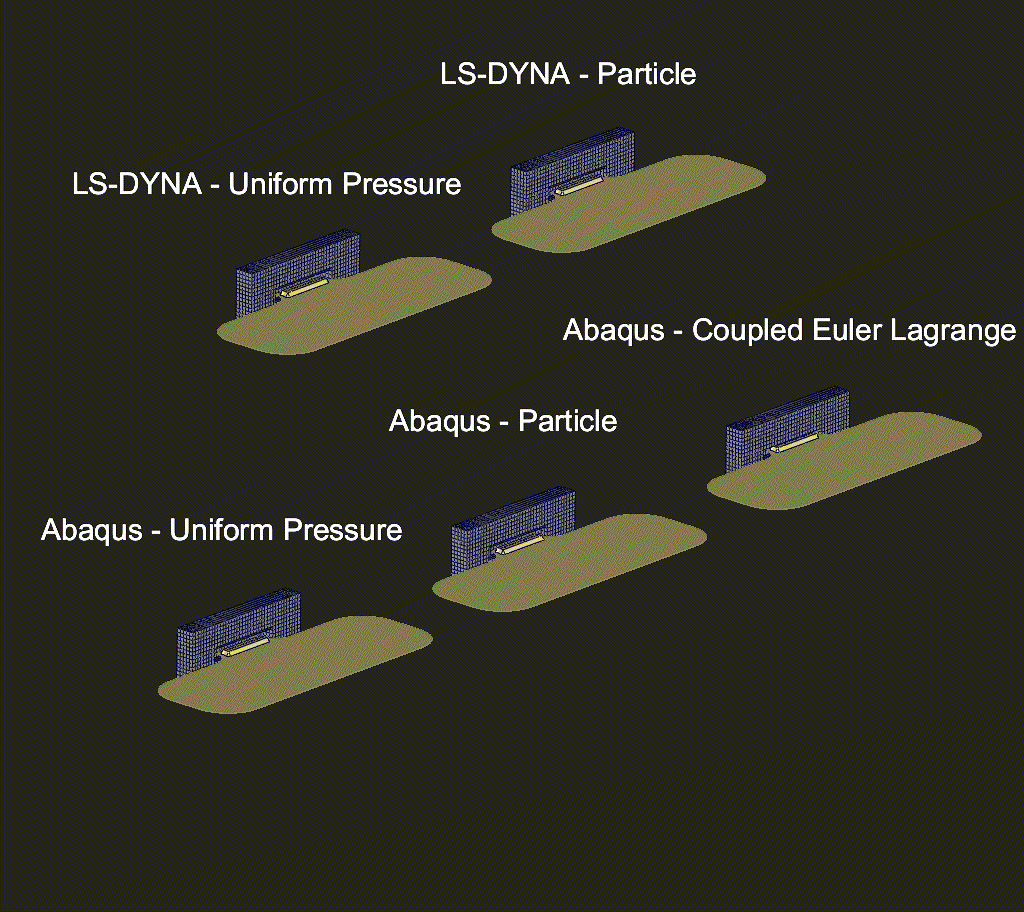
To assure the real life utilizability of the smile language and the corresponding workflow, a couple of examples were set up. A simple vase was modelled in SMILE and exported for different solvers with varying element sizes. The configuration file that was used, is the setup for an eigenfrequency analysis. The animation illustrates the 7th mode for the solvers Abaqus and LS DYNA with two different discretisations. All simulations were peformed with the same SMILE Inputdeck.

The second example illustrates the capability of using much more complex modelling guidelines. An airbag was modelled in SMILE to be investigated with LS-DYNA and Abaqus/Explicit using diffrent numerical methods for the inflation:
- Uniform Pressure Method (UPM) in LS-DYNA and Abaqus/Explicit
- Particel Method: Corpuscular Particle Method (CPM) in LS-DYNA und Lumped Kinetic Molecular model (LKM) in Abaqus/Explicit
- Coupled Eulerian-Lagrangian (CEL) in Abaqus/Explicit
All of the five listed simulations were performed with the identical SMILE model. The different modellling technics in the automatically translated solvercode is chosen by a single parameter.
It is possible to add any aditional type of technology for the inflation without editing the SMILE model. Solely the modelling guidelines would need to be updated.
